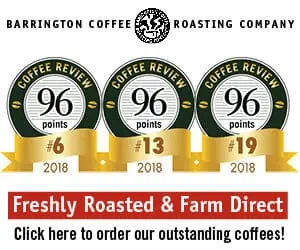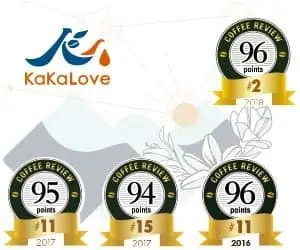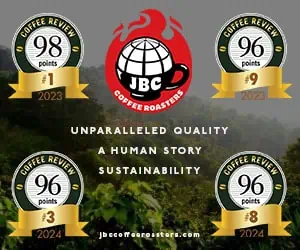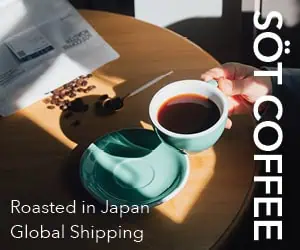Over the years we have used our annual readers’ nominations story to attempt to find and celebrate regional roasting companies whose coffees we have never reviewed before. This year we ended reviewing six coffees from companies that have never appeared in Coffee Review, and five from companies that have.
Overall, we tested forty-three coffees from twenty-five regional roasting companies. Once invited, the roasting companies chose the coffees they wanted considered for review. Ten of the highest rated of those forty-three samples are reviewed here, ranging in score from 95 to 91. (Three of the higher rated coffees came from a single roaster, Beansmith of Omaha, Nebraska. Following our usual practice of avoiding reviewing multiple samples from the same company in the same article, only the highest rated of the three Beansmith coffees, the impressive 93-rated Ecuador, is reviewed here.) In addition, seven coffees from six different roasters rated a respectable 90; we decided to review one of these, the Bonlife Haiti, simply because it was the best Haiti to come into our lab in some time and that deeply afflicted country needs as much positive attention as it can get, even if the attention is as humble as a good coffee review.
Some Modest Trend-Spotting
Forty-three coffees from twenty-five regional roasters is hardly a comprehensive sampling, but it does tempt a little modest trend spotting.
Ten years ago the typical roaster start-up would have roasted everything in the warehouse dark, probably very dark, and is quite likely to have differentiated itself by exclusively offering organic and Fair Trade coffees.
It appears today that the typical roaster start-up roasts everything medium to light and is basing its positioning mainly on offering exceptional single-origin coffees. The organic and Fair Trade appeal is either backgrounded or boosted by a whole range of progressive company policies that push beyond certification and may range from delivering coffees by bicycle to only using recyclable packaging to supporting select causes both global and local. In other words, it appears that today simply offering organic and Fair Trade certified coffees and roasting them any old way is not nearly enough to successfully position a newer small coffee roasting business.
Light-Roasted vs. Under-Roasted
Returning to the roast style issue, just three or four years ago it appeared that some smaller roasting companies had rebounded so far from dark roasting that they were barely roasting their coffees at all. The line between very light-roasted coffees that taste exhilaratingly like honey, fragrant fresh-cut cedar and meadowy flowers, for example, and underdeveloped coffees that taste more like toasted grain, plain wood and sweet grass is a narrow one, and a couple of years ago some roasters were not always making the cut.
However, almost all of the coffees we tested this month displayed a clear commitment to variations on medium roasting. We received probably two underdeveloped samples at most and three or four darkish roasted samples, with all the rest clearly aimed at various sweet spots clustered around the middle of the roast spectrum.
Trends in Green Coffee Sourcing
Surprisingly, perhaps, the set of samples we received did not generally support the trend toward experimentation in processing method that appears to be gaining traction in Central America and elsewhere. Most of the coffees we received were conventionally wet-processed, with relatively few “natural” or dried-in-the-fruit coffees and no honey or dried-in-the-pulp coffees whatsoever, at least so far as we could tell. In fact, we were surprised that the two most impressive Ethiopias we tested were stunningly and elegantly bright wet-processed coffees (the 95-rated Novo Yirgacheffe Belekatu and the 94-rated Highwire Yirgacheffe Blue Nile) rather than fruit-toned dried-in-the-fruit Ethiopias that of late have attracted so much attention among roasters. (We did, however, review one very fine dried-in-the-fruit Ethiopia this month, a very discreet and clean example of the type, the Bent Tree Ethiopia Gelana Abaya, 93.)
Does this mean that there is a new countertrend back toward classicism and the conventionally transparent, wet-processed cup? Perhaps, though I doubt it; for one thing the timing of our cupping was not right to capture the best of the Central America processing experiments.
The Wine Barrel Experiment
Plus we tested one startling and successful example of green coffee innovation, though in this case the experimenting is taking place here in the States. The Ceremony Coffee Mexico Santa Teresa (95) is an obviously fine Mexico coffee that was held after arrival in a wine barrel, in this case a barrel from red wine produced from the cabernet franc grape variety. When I first got wind of the Ceremony experiments they sounded rather contrived (hey, let’s make coffee more like wine by putting it in wine barrels!), but this month’s sensory outcome did not in the least strike me as contrivance or novelty. The sample we cupped seemed stunningly deep and seamless in its expression of overlapping sensory properties of wine and coffee.
Purists may argue, of course, that putting green coffee in a wine barrel to alter its cup profile is somehow cheating in the game of fine coffee. Perhaps there is some merit to that argument. Excellence in any human endeavor is defined in part by rules that limit innovation while simultaneously giving value to those innovations that are accepted. For example, I would be sorely disappointed if some innovation like this one eventually discouraged the time and money producers are currently investing in trying to understand and control the impact of fermentation in drying coffee fruit, which when performed successfully can contribute such a pleasing wine- or brandy-like nuance to the cup. On the other hand, the Ceremony wine-barrel-conditioned Mexico was one damn fine coffee and its character for me displayed the inevitability and resonance of the partnership of craft and nature that we expect from both wine and coffee.
2013 The Coffee Review. All rights reserved.










